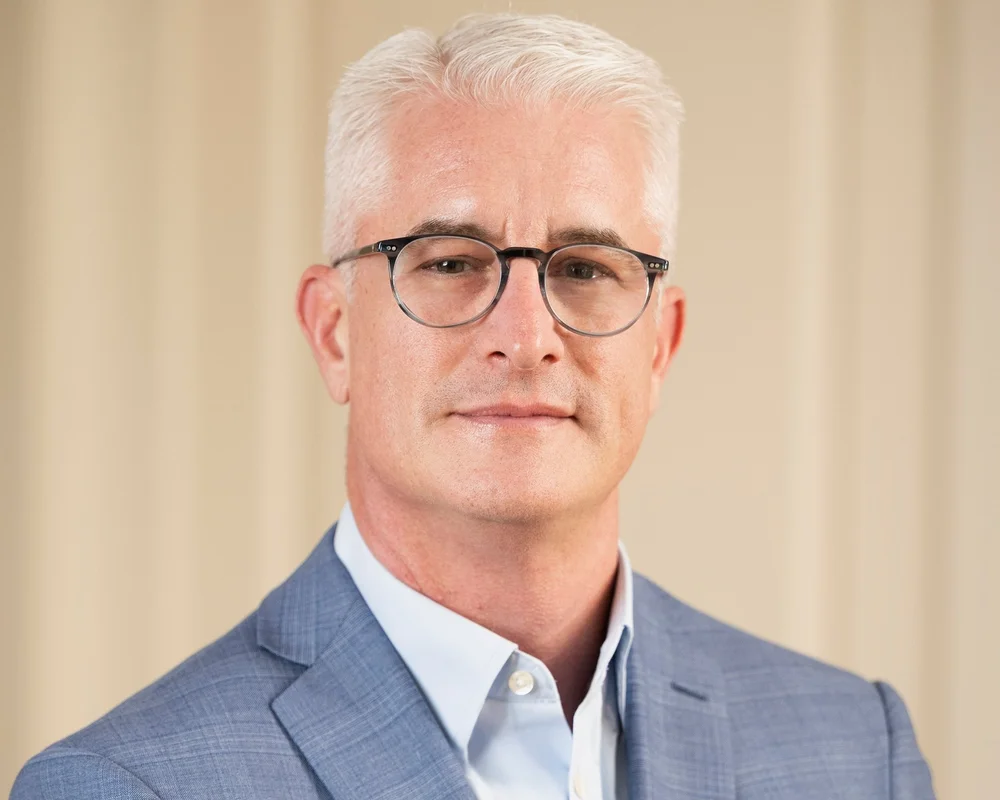 The market for fiber and bandwidth in the New York metro area has been a dynamic one, and last year we saw several new providers enter the market in force. One of those is Cleareon, which a few months ago acquired Pangaea Networks and moved into the lit services space, and which has big plans of both the organic and inorganic variety. With us today to tell us a bit of what Cleareon has in store for 2017 and beyond is co-CEO Cliff Kane.
The market for fiber and bandwidth in the New York metro area has been a dynamic one, and last year we saw several new providers enter the market in force. One of those is Cleareon, which a few months ago acquired Pangaea Networks and moved into the lit services space, and which has big plans of both the organic and inorganic variety. With us today to tell us a bit of what Cleareon has in store for 2017 and beyond is co-CEO Cliff Kane.
TR: Last autumn, Cleareon bought Pangaea Networks and became a lit services provider. How did that come about?
CK: Cleareon started life as a pure play dark fiber provider, but we always knew that would be short-lived and that we would get into the lit services business. We were in touch with the folks at Pangaea, and when they ran a process to sell the company we just realized we needed to do this. The deal metrics and values were right in line with what we could do at the time, and it accelerated our jump into the lit services business. We wound up with good customers, revenue, and a solid team, and we increased our relationships and depth into the carrier market. It’s really complementary. It’s something that we probably would have gotten into organically this year, but given the way the deal came to us with the team and the value, we decided to pull the trigger early.
TR: What kind of synergies were you able to derive, and how far along is the integration?
CK: We were able to combine a number of the assets, move some traffic onto owned facilities. One of the steps we took early on before we even acquired Pangaea was during the due diligence process we audited the entire network. We inventoried everything into our OSS system, so we kind of had a jump on things. It’s worked out really well, and is essentially all done. There are always some loose ends, of course.
TR: So with Pangaea’s assets in hand, what does Cleareon’s infrastructure look like today?
CK: In terms of building a core network, it was a very strategic acquisition for us. Our footprint was exclusively on Manhattan to start with, but now we cover New Jersey with connectivity to a number of data centers in northern New Jersey as well as some additional ones in New York City. Pangaea has a mix of leased fiber and leased circuits, but they also owned a core network of Ciena gear in all the PoPs.
TR: Are you planning to expand that footprint further? Will you overbuild any of the leased footprint with dark fiber?
CK: The way we look at that is once we meet certain traffic thresholds, we might lease a dark fiber pair. If we exceed that or if there is exceptional demand in that data center or carrier hotel, we will build to it. It’s a success-based capital deployment strategy. If we get anywhere near those nodes on a build for a customer, we will certainly build a big fiber count cable to them. But we are pragmatic. There is enough fiber out there that we can be responsive to demand, and we don’t need to necessarily pull an 864 count cable into every data center in to provide service.
TR: Are there new areas you might expand into?
CK:. We’re in all the major sites in the NYC metro, but there are probably a couple more that we are talking to and will probably PoP later this year. We are looking at a radial type expansion with eyes on Westchester, Long Island, Connecticut, and whatever holes we have left in New Jersey. We will probably go to Long Island and Connecticut before Westchester. But it will be opportunity-driven.
TR: How do you view inorganic expansion opportunities today?
CK: We are in M&A mode, and we are in a good spot for it. The recent wave of consolidation has swept a lot of the middle players out of the market, and the capital sources and bankers are looking down market for platform companies. We have paid a lot of attention to getting our backoffice, corporate structure and processes done well. You have to do these things right to build a great company, but one of the side benefits is that it sets you up to be an M&A platform. We are looking to acquire other companies, tuck them into the fold, and integrate them. Our approach is different than the rapid scaleups like at MCI Worldcomwhere operationally they were just bolted together and not integrated. We buy businesses or assets and fully integrate them down to the network, personnel, and structure internally. We feel that we can acquire at least one if not two or three companies this year. But we are focused on doing it the right way.
TR: What kind of targets would be a fit, and how will you fund the purchase?
CK: We are a young company, so we can look at a lot of different things. To begin with, it has to be priced right of course. In terms of assets, we see personnel, relationships and customers as viable assets. We are not in the enterprise space currently, so acquiring a business that has a good enterprise customer base might be good for us. We will look at assets that augment our existing footprint, or assets that can be synergized into our current footprint. We’ve had conversations with capital sources, including our current backers who are very supportive of our plans. If I were going to put numbers on it, I’d hope to put $100M in capital to work over the next year to two years. If it’s more or less than that I’m ok with it though, we want to do it right.
TR: Could those plans take you beyond the New York metro area?
CK: We want to get New York established first. When we have reached scale in New York, and we are satisfied operationally, we could look at Philly or Boston or Albany or Stamford – places that are reachable. Unless there’s some compelling reason, I wouldn’t want to be getting on a plane for LA or anyplace far right away.
TR: Tell us about your new commercial real estate initiative
CK: Our thesis is that commercial real estate owners are going to start investing in wireless and wireline connectivity in their buildings as a way to make their properties more attractive and marketable. Their tenants or prospective tenants are looking for a full five bars of service, and they want choice in terms of carriers that the incumbents won’t provide or that is too expensive to provide through the incumbents. So we are developing solutions that include a wiring system for DAS and wireline connectivity throughout the building, and we are thinking of a C-RAN architecture where we could consolidate the traffic from a number of buildings at a remote head end that would also serve as a meet-me-room from which we can take it back to our core network. The concept is resonating well with everyone that we talk to in the real estate community. We are working with several well-known real estate owner/management/brokerage type companies to develop a solution that can be sized appropriately for different buildings and can address connectivity on both the wireless and wireline front.
TR: What underlying trends in the infrastructure space are you trying to harness?
CK: In general we see the marketplace for wireline services over the next few years going more toward usage-based billing and self-subscription models. Customers are going to be looking for multiple choices and a transactional marketplace, for example moving traffic from one cloud to another cloud or needing transatlantic service for only a month. Given what we can do today technology-wise, we can address those types of requirements, and we can do it without getting a bloody nose from leading the charge but rather with off-the-shelf technology. But where it all congeals and makes sense is when you look at the cost structure to deploy DAS systems. Now that all the low-hanging fruit from the big venues and massive buildings has been harvested, how do you reach all of those thousands of other buildings? What we are getting to is a shared infrastructure for wireline and wireless services. A lot of it has to be separate cables, but if you put it in at the same time there are still efficiencies.
TR: How would the business model work for this? Who are the partners and who are the buyers?
CK: There are couple of really attractive aspects to it. We are having dialogs with big real estate companies and some have expressed a willingness to put up capital for these types of systems. But at the end of the day we will have an infrastructure that can be marketed from both sides. The customer could be the commercial building tenants, where we can say here is our list of carriers to choose from. From the side of the carriers and service providers we would now have this building online and be able to make all these customers available to them. We are situated here in the middle to facilitate that connectivity, and make our money from controlling and managing that whole system.
TR: How would you go about deploying such networks?
CK: For example, in a building of 750k or 1M square feet one might need to put in $3-4M of capital to deploy the systems and the structured wiring to deliver the services. Ideally we would want to own the network. However, either we or the building owner or a financial partner would put up the capital, and then we would operate the system and facilitate all the transactional requirements that are generated. We already have the back-office systems to manage and provision and maintain everything.
TR: What timeline do you envision for this new line of business?
CK: We are in missionary mode right now. We think that there will be a learning curve in the real estate world. But we’ve gotten a lot of feedback from the major real estate players out there, and it’s clear that this is a direction they are going. We have several proposals out, and we’ve been talking about this since last summer. We think we will probably get our first one or two or even three of deals done later this year, and it will increase from there.
TR: Thank you for talking with Telecom Ramblings!
If you haven't already, please take our Reader Survey! Just 3 questions to help us better understand who is reading Telecom Ramblings so we can serve you better!
Categories: Industry Spotlight · Mergers and Acquisitions · Metro fiber






Discuss this Post